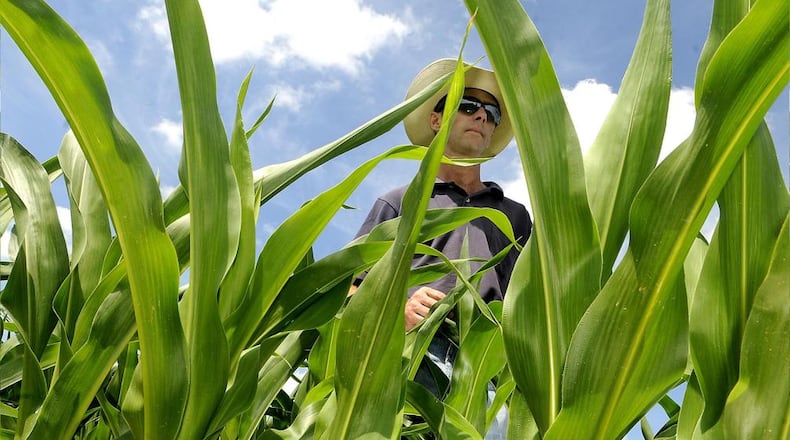ROYAL COUPLE: Springfield couple married 73 years crowned Golden Wedding King, Queen
From the beginning, this crop seemed different. The corn seemed to almost shoot from the ground, growing at an incredible rate until it tasseled and silked, a bit earlier than usual in my opinion.
One day we were watching sunsets and the neighbors across the fields, and then almost suddenly we were isolated and surrounded by corn forests. Driving down a road with seven feet high walls of corn stalks on both sides for nearly half a mile can make some of us feel downright claustrophobic. We are u»sed to our wide open spaces.
So what is going on?
MORE FROM PAM COTTREL
A few years ago I asked Greenon’s FFA instructor, now retired, Colin Guerke about this fast growing corn that was well above “knee high by the Fourth of July.” He pointed to improved varieties of corn as the reason.
After all, humans have been improving crops for thousands of years. Every year seeds from only the best were kept to plant the next year and the crops got better and better. The primitive farmer’s common sense has changed over the centuries into our agriculture science.
On top of that, hybrids can bring in factors like adaptability to colder soils for earlier planting and strength of the stalk.
As one farmer told me this week, “There is full science around all of this. Most of Ohio has had far from a perfect growing season. Everything was too wet, too late, too cold, and then too extreme heat. Thankfully, today’s hybrids are extremely tolerant in many conditions, allowing farmers the opportunity to produce food for a hungry world.”
When you see a sign next to a corn or bean field with a number on it, that field is being set forth as an example of what that variety of corn can do. Take a look as you drive. There are lots of new varieties of seed corn being used in our fields. Farmers pay attention to this and choose the best for next year.
Remember the corn fields from 50 or even just 20 years ago? There was more empty space for weeds to grow. Today’s seeds are planted only a couple of inches apart and the rows are closer too. The result is a higher number of corn stalks and ears of corn per acre.
This is not a random thing. Farmers carefully plot the fertility of the soil, and drainage, with specific varieties of corn that have shown success in that situation.
I spoke to a number of farmers about the huge corn this year and they all wanted to talk about it anonymously, which was fine with me. After all I was just asking for opinions and not scientific research.
Most seem to feel that the weather is the biggest factor this year with more rain spaced at good intervals in some areas. One farmer told me of shorter corn in a county that had less rain. He knew the same variety of corn had been planted there as in his fields.
The wheat fields were lovely this year too and truly lived up to the “amber waves of grain” that we sing about. Even the fields of soy beans seem also to be thicker than previous years.
It appears that we are living in the midst of a “perfect storm” of growing.
Improved varieties, updated methods, great timing, and good weather appear to have combined to make 2018 a great year. We won’t know until after harvest, but until then we can enjoy the beauty of the lush crops.
Meanwhile we all have a couple of more months to go until beans then corn will be harvested.
I like to look at those fields and imagine how many hundreds of thousands of people and animals will be fed from the fields surrounding our communities. We have been given stewardship of this good land for our lifetimes and it makes me happy to think that we make the world a better place with our efforts.
And there is something else we all must keep on our minds. During this late summer, we need to have the self control to come to a full stop at every stop sign especially at those corners with walls of corn. Be aware of the disadvantage we have not being able to look around curves and corners of the corn forests. We need to watch for other drivers, motorcyclists, and bicyclists that might be hidden by the corn. And of course keep an eye out for farm equipment on the roads too.
About the Author
